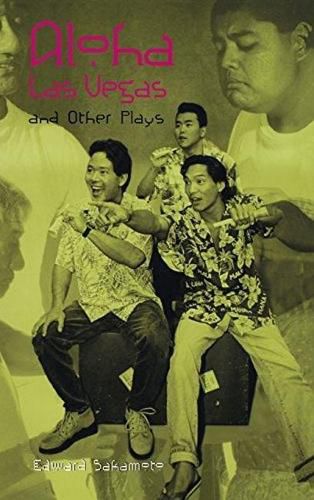Readings Newsletter
Become a Readings Member to make your shopping experience even easier.
Sign in or sign up for free!
You’re not far away from qualifying for FREE standard shipping within Australia
You’ve qualified for FREE standard shipping within Australia
The cart is loading…






Edward Sakamoto is one of Hawai'i’s most popular playwrights. His skillfully constructed depictions of
local life
and command of stylized narrative devices have earned him recognition and acclaim both in the Islands and elsewhere in the U.S. The three plays collected here present an expertly dramatized panorama of life in Hawai'i from 1959 to 1994.
A'ala Park explores a working-class milieu with honesty and humor in this gripping study of a young man stunted by a slum environment at the time of statehood. Stew Rice, juxtaposing the hopes of the late 1950s with the realities of the late 1970s, charts the fortunes of three highschool buddies and the consequences of their individual decisions to leave or remain in Hawai'i. Aloha Las Vegas centers on a retired baker, land rich but cash poor, who wrestles with the decision to relocate to Las Vegas in 1994.
Sakamoto is quick to challenge easy affirmations and identifications. Beneath their feel-good humor and celebration of local language and culture, the plays have a depth and an unpredictability. As Dennis Carroll observes in his Introduction, all of them center on the theme of
Hawai'i versus the mainland
and the challenges of relocation–the ambiguities of the definition of
home
and whether it can ever be recovered or regained–and the special qualities of local life that can or cannot be transplanted. This theme is relevant to all Americans familiar with the immigrant experience, not only those living in Hawai'i. A glossary of pidgin words and terms is included.
$9.00 standard shipping within Australia
FREE standard shipping within Australia for orders over $100.00
Express & International shipping calculated at checkout
Edward Sakamoto is one of Hawai'i’s most popular playwrights. His skillfully constructed depictions of
local life
and command of stylized narrative devices have earned him recognition and acclaim both in the Islands and elsewhere in the U.S. The three plays collected here present an expertly dramatized panorama of life in Hawai'i from 1959 to 1994.
A'ala Park explores a working-class milieu with honesty and humor in this gripping study of a young man stunted by a slum environment at the time of statehood. Stew Rice, juxtaposing the hopes of the late 1950s with the realities of the late 1970s, charts the fortunes of three highschool buddies and the consequences of their individual decisions to leave or remain in Hawai'i. Aloha Las Vegas centers on a retired baker, land rich but cash poor, who wrestles with the decision to relocate to Las Vegas in 1994.
Sakamoto is quick to challenge easy affirmations and identifications. Beneath their feel-good humor and celebration of local language and culture, the plays have a depth and an unpredictability. As Dennis Carroll observes in his Introduction, all of them center on the theme of
Hawai'i versus the mainland
and the challenges of relocation–the ambiguities of the definition of
home
and whether it can ever be recovered or regained–and the special qualities of local life that can or cannot be transplanted. This theme is relevant to all Americans familiar with the immigrant experience, not only those living in Hawai'i. A glossary of pidgin words and terms is included.